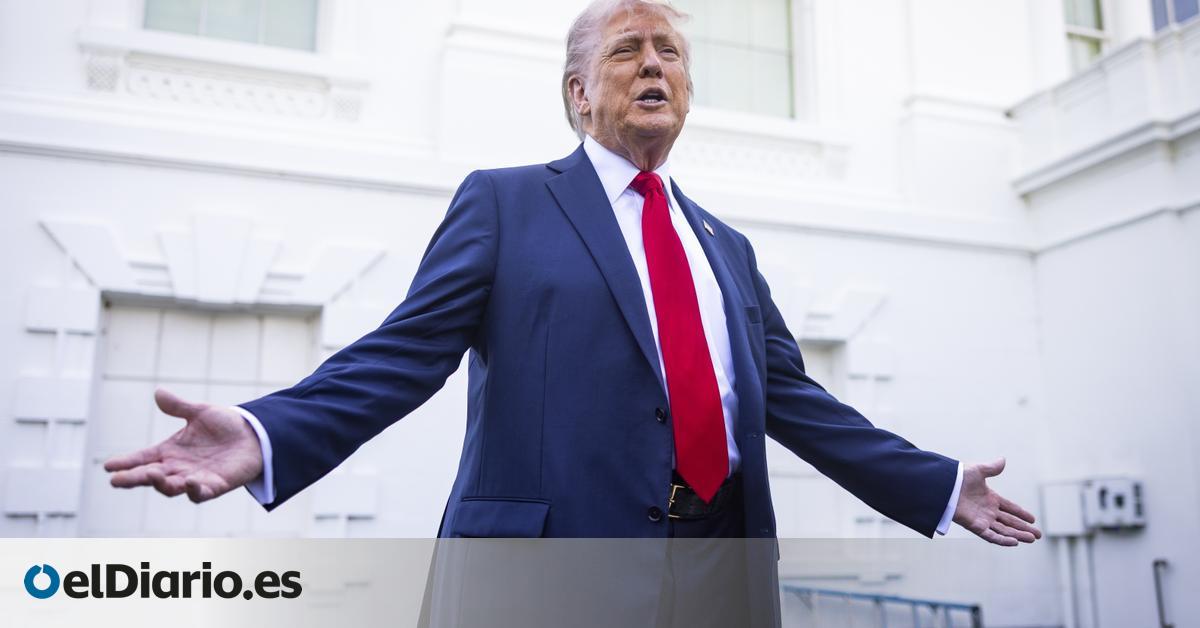
When the markets began to sink with the tariff table that Donald Trump presented in the so -called “Day of Liberation”, the US president mocked the stock exchange and dismissed him. Just over three weeks have passed since then and the president has not only applied a commercial truce – partial – 90 days with most countries, but also has lowered the tone with China. Trump seems to have found in the markets a rival capable of making his aggressive policies fence.
In the three months that he has been sitting in the Oval Office, Trump has ordered mass layoffs, has broken with the old allies to approach Russia and has even challenged (and drew up) the authority of the judges. All these actions have involved protests, mobilizations, criticism and a fall in popularity in surveys. But, for the moment, the only ones who have put a stop to the president’s aspirations, and have been recular, have been the treasury markets and bonds. “Don’t be weak! Don’t be stupid! … Be strong, brave and patient, and greatness will be the result!” Trump published in the first days after the announcement of the commercial war, while climbing to almost absurd figures the tariffs for China. In those days the shock state of Wall Street was double, not only to see how the president ignored the notices of possible recession, but because Trump had always been guided by the markets.
In the first presidency, Trump has already used to follow stock markets, almost with the same attention as popular surveys. Even so, he has always had the habit of signing the merit when the curve rose up and disregard if he moved in the opposite direction. Sample of the fixation of the tycoon with these is how he used them as a weapon of attack against their Democratic rivals, Joe Biden and Kamala Harris, during the last electoral campaign. Trump continues to criticize former President Biden for leaving him a “sick” market and assured that Harris would cause a “kamala collapse” and a “1929 style depression.”
But even when the market reaction dismissed, Trump has not been able to hide his fixation with them. Whether to criticize or make predictions, the president had a very active days in Truth Social commenting on each of the shackles that he caused in the bags. From ensuring that at the end there would be a “boom” to announce their followers to buy shares a few hours before announcing the tariff truce and firing the stocks again.
Although, from doors out, the administration has been justifying each of the commercial flyers as part of a “long -term” plan to improve the US economy, the white house halls say something else. The reduction of reciprocal tariffs for 90 days was more fruit of a long talk by the Secretary of the Treasury, Scott Besent, and other members of the Government on the alarming performance of the treasure bonds than something orchestrated in advance.
The same seems to be happening now with the commercial war with China. In a week, Trump has gone from announcing tariffs up to 245% for some of the Asian imports to lower the tone and ensure that in the coming weeks will set a new downward figure. The turn, they publish The Wall Street Journal y Bloombergit coincides just after Trump on Monday met with senior executives of the country’s large surfaces, such as Target, Walmart and Home Depot. As explained by people familiar with the conversation to both media, the representatives of the companies warned the president that the taxes on Chinese imports would imply an increase in price in their products.
The big chains were not the only ones to sound alarms. Norfolk Southern, a large railway transport group in the United States, warned Wednesday that tariffs could slow down cars and containers, due to the “uncertainty in export trade.” The Boeing Aircraft Company also said Wednesday that, due to the escalation between the United States and China, it would have to look for new buyers for some of its models.
On Wednesday, Besent acknowledged that the commercial war with China is not “sustainable” in the terms raised and Trump began to reduce the tone before a Beijing that has not retreated a millimeter in its retaliation tariffs. Right now, the Republican is sailing between the overwhelming reality of the market and his theory to reindustrialize the country.
One of the fears of Trump’s tariff policies is to create exclusive dynamics where only large companies with contacts with the White House would achieve exceptions. It is something that the president himself raised to the press shortly after announcing reciprocal tariffs. “There are some who have affected them a lot,” Trump acknowledged at the beginning of April. “There are some that, due to the nature of the company, look a little more harmed. We are going to study that case.”
This dynamic is not only reflected in the change of position with China after the meeting with the executives of the great US chains. It was also seen when the president granted a month of grace to the 25 % tariffs for cars after the big motorists – Stellantis, General Motors and Ford – asked.
Source: www.eldiario.es

